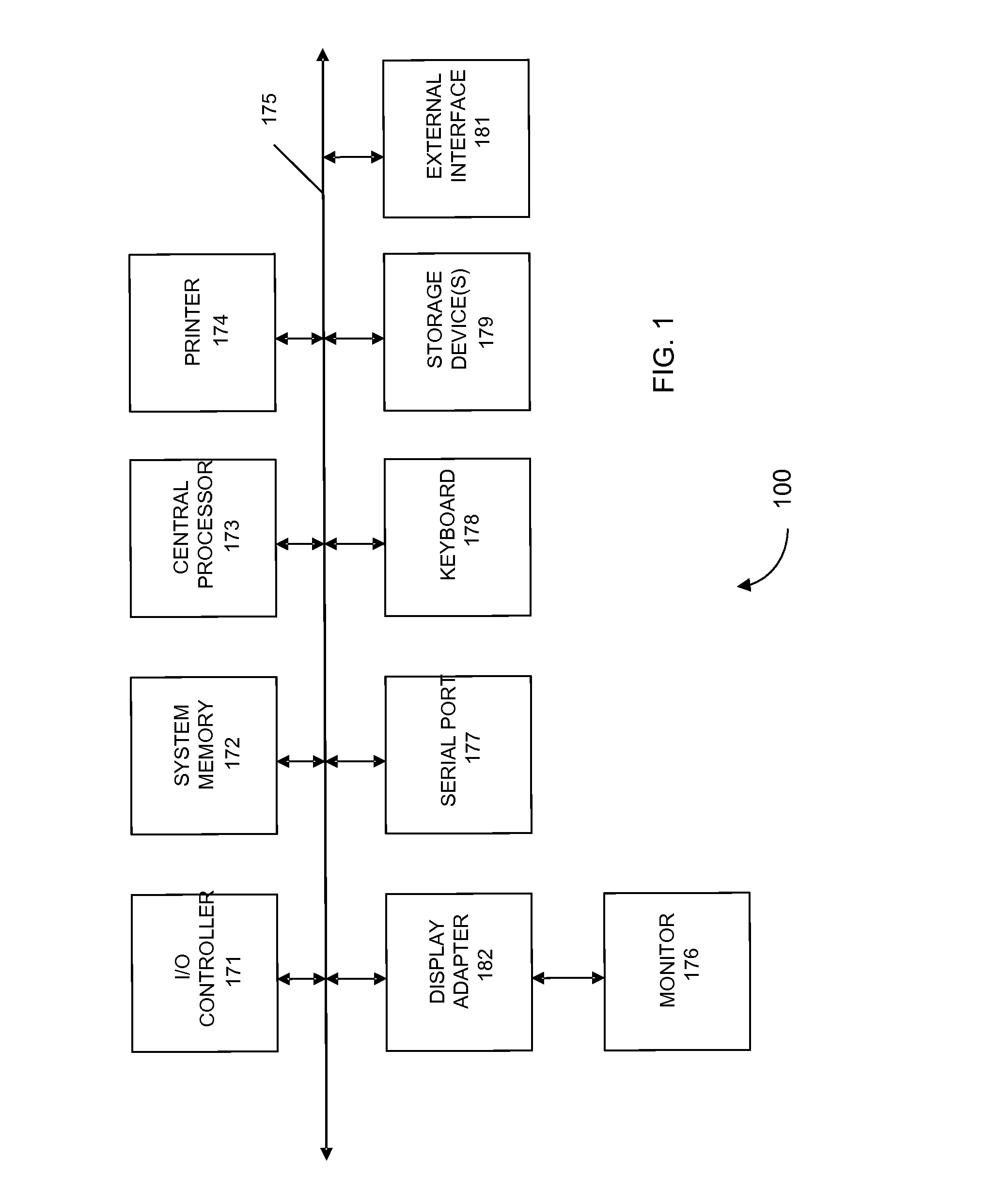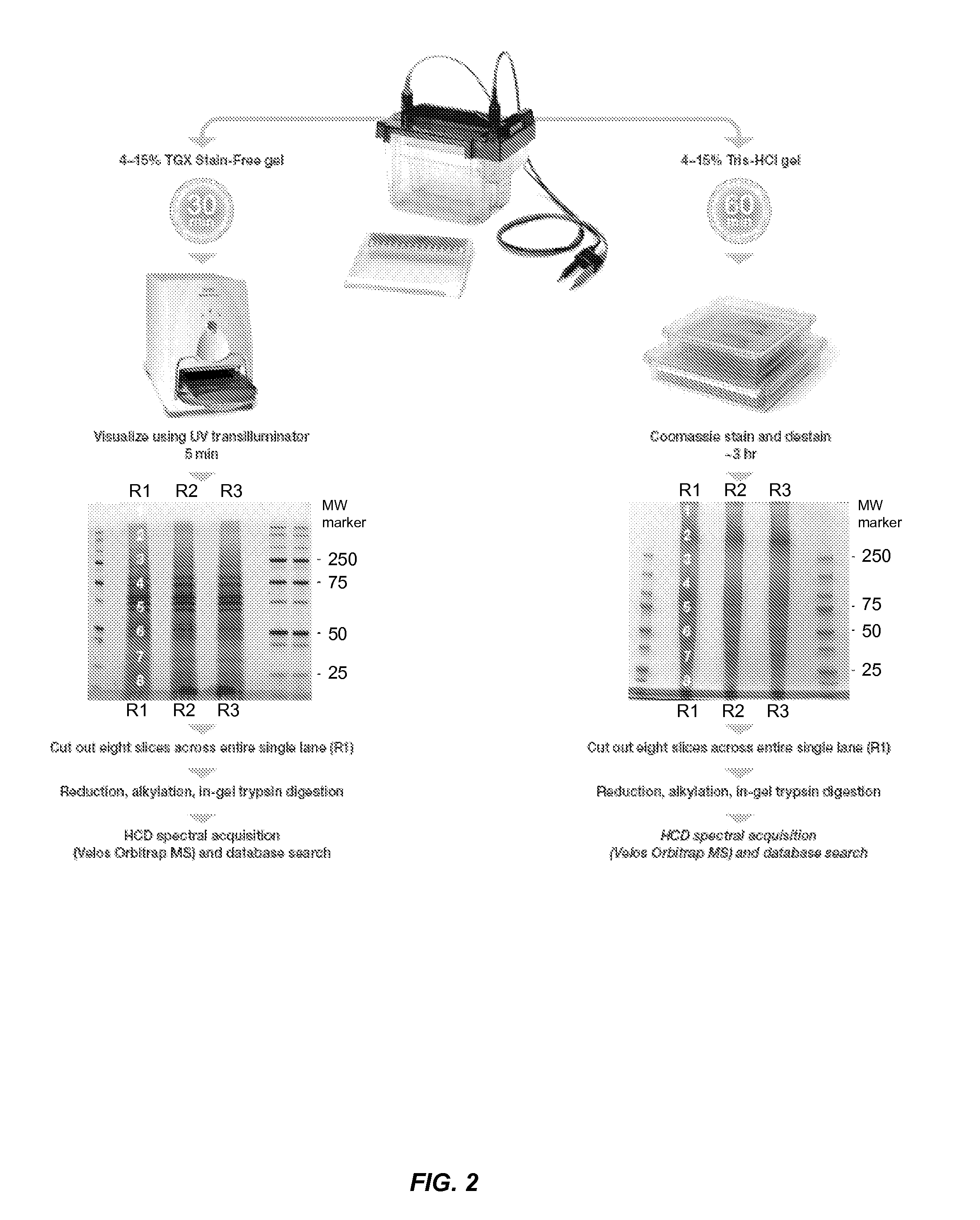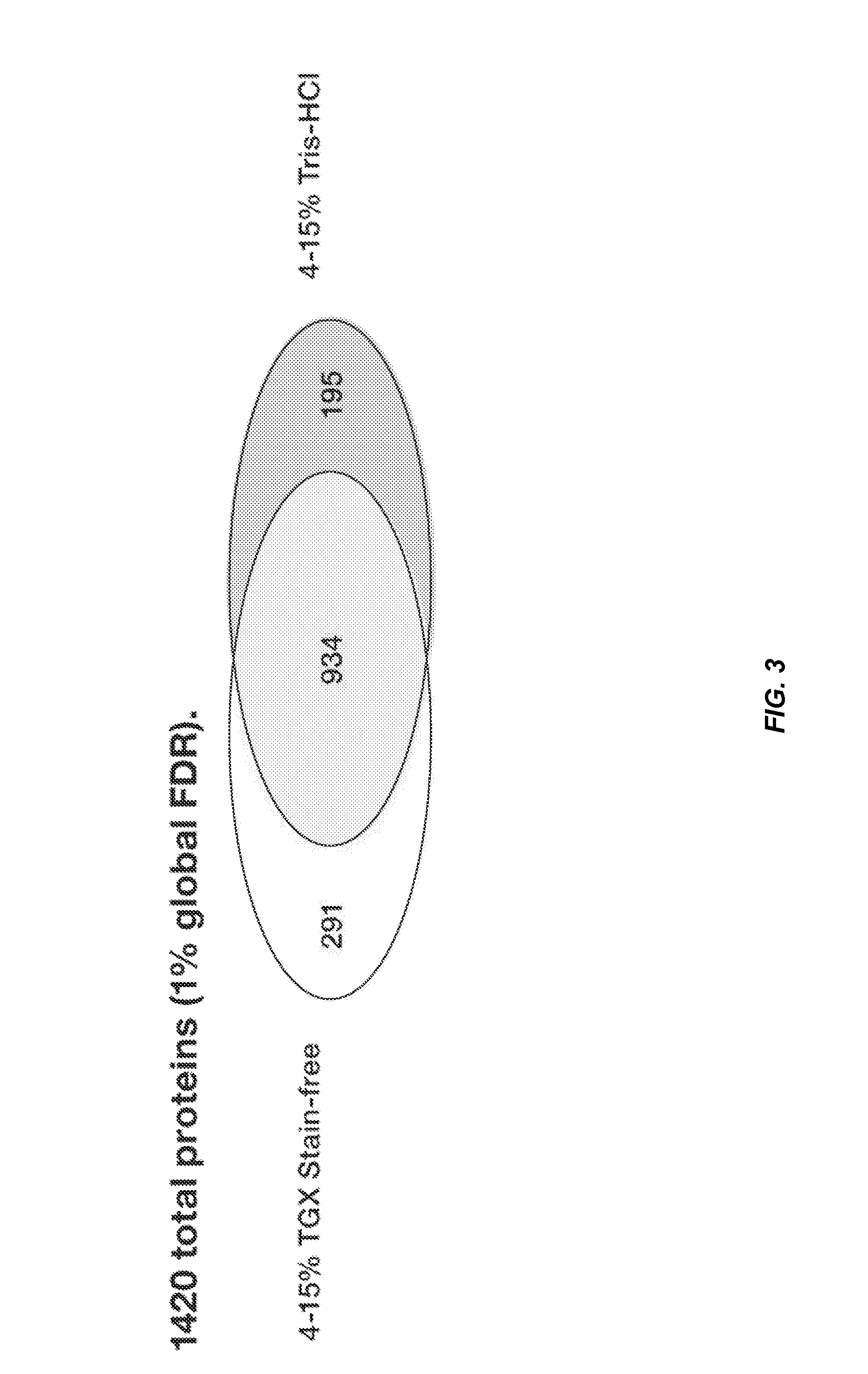Gelc-ms using stain free technology
a gelcms and stain-free technology, applied in the field of proteomics, can solve the problems of complex mass spectra, insufficient purity of biological samples containing diverse populations of proteins, and inability to submit directly to mass spectroscopy
- Summary
- Abstract
- Description
- Claims
- Application Information
AI Technical Summary
Benefits of technology
Problems solved by technology
Method used
Image
Examples
example
[0068]Protein Electrophoresis and Collection of Individual Gel Slices.
[0069]50 μg protein from 3T3 whole cell lysates was electrophoresed on 4-15% Criterion Tris-HCl or Criterion TGX Stain-Free gels in triplicate. After electrophoresis, Tris-HCl gels were visualized by Coomassie staining and destaining (−3 hr). After destaining was completed, eight slices covering one single entire lane were cut and processed for in-gel trypsin digestion and post-digestion sample processing. In the case of samples run on TGX Stain-Free gels, gels were visualized using a Gel Doc EZ imager with 5 min UV activation and eight slices covering an entire single lane cut out identically as above for in-gel digestion and post-digestion peptide purification. Each gel slice was assumed to contain ˜6 μg protein. See FIG. 2.
[0070]In-Gel Digestion (Adapted from Shevchenko et al. 1996).
[0071]Gel slices were initially washed with water, twice with 1:1 100 mM NH4HCO3 / acetonitrile for 15 min each, and then washed onc...
PUM
| Property | Measurement | Unit |
|---|---|---|
| wavelength | aaaaa | aaaaa |
| temperature | aaaaa | aaaaa |
| wavelengths | aaaaa | aaaaa |
Abstract
Description
Claims
Application Information
 Login to View More
Login to View More - R&D
- Intellectual Property
- Life Sciences
- Materials
- Tech Scout
- Unparalleled Data Quality
- Higher Quality Content
- 60% Fewer Hallucinations
Browse by: Latest US Patents, China's latest patents, Technical Efficacy Thesaurus, Application Domain, Technology Topic, Popular Technical Reports.
© 2025 PatSnap. All rights reserved.Legal|Privacy policy|Modern Slavery Act Transparency Statement|Sitemap|About US| Contact US: help@patsnap.com



